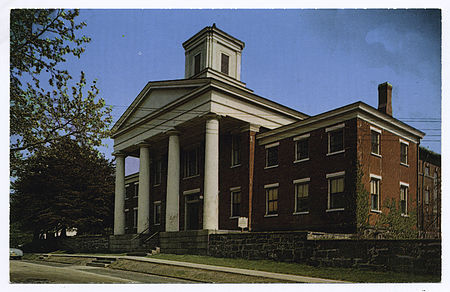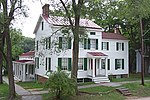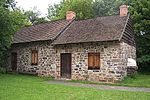Third County Courthouse (Staten Island)

The Third County Courthouse is an 1837 Greek Revival building at 302 Center Street in Historic Richmond Town, near the geographic center of Staten Island, New York. Preceded by two smaller courthouses, it was the Richmond County Courthouse during most of the nineteenth century and was in use until 1919, when it was replaced by the Richmond County Courthouse in St. George. The building is the oldest extant structure in New York City built primarily as a courthouse. A jail used to be adjacent. The building was the site of the sensational 1844 trial of Polly Bodine, who was accused of murdering her husband's sister and niece and setting fire to their house, a case commented on by Edgar Allan Poe and P. T. Barnum, among others. The packed trial resulted in a hung jury and then an early case of change of venue, first to Manhattan, which resulted in a conviction, later overturned, and then to Newburgh, New York, where Bodine was acquitted.
Excerpt from the Wikipedia article Third County Courthouse (Staten Island) (License: CC BY-SA 3.0, Authors, Images).Third County Courthouse (Staten Island)
Center Street, New York Staten Island
Geographical coordinates (GPS) Address Nearby Places Show on map
Geographical coordinates (GPS)
| Latitude | Longitude |
|---|---|
| N 40.570833333333 ° | E -74.145555555556 ° |
Address
Third County Courthouse
Center Street 302
10306 New York, Staten Island
New York, United States
Open on Google Maps









